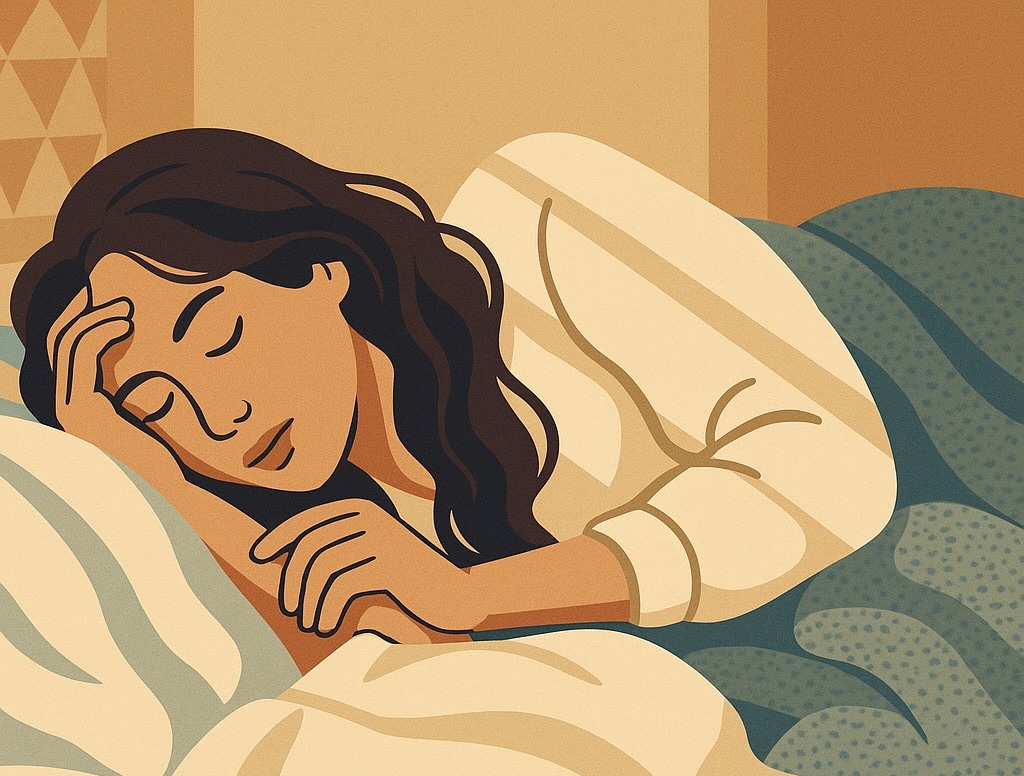The Sunlight-Sleep Connection: How Daylight Exposure Improves Your Sleep

If you're struggling with sleep issues, the solution might be simpler than you think. Rather than focusing solely on your bedtime routine, research increasingly shows that what you do during daylight hours—specifically, how much sunlight you get—plays a crucial role in determining your sleep quality.
The Science Behind Sunlight and Sleep
The connection between sunlight and sleep is rooted in our biology. All humanity has lived on the Earth with a clear pattern: being active during daylight and asleep in darkness. This pattern is encoded in our physiology through the circadian rhythm: our internal 24-hour clock.
When morning sunlight enters your eyes, specialized photoreceptors send signals directly to the suprachiasmatic nucleus (SCN), the master clock in your brain. This triggers a cascade of hormonal changes:
- Cortisol increases: Promoting alertness and energy
- Melatonin decreases: Stopping the "sleep signal"
- Serotonin production rises: Boosting mood and helping regulate sleep later
This morning light exposure essentially "sets" your internal clock, starting a roughly 16-hour timer until your body begins producing melatonin again to prepare for sleep.
How Modern Life Disrupts This System
Today's lifestyle often disrupts this finely-tuned system:
- We spend 90% of our time indoors under artificial lighting that's 50-100 times less intense than natural daylight
- Evening exposure to blue light from screens suppresses melatonin production
- Irregular schedules confuse our circadian signaling
The result? Millions suffering from insomnia, sleep-onset difficulties, nighttime awakenings, and non-restorative sleep.
The Evidence for Sunlight's Impact on Sleep
Multiple studies demonstrate the profound effect of daylight exposure on sleep quality:
- A 2017 study published in Sleep Health found that office workers with more daylight exposure fell asleep 18 minutes faster and got 37 minutes more sleep per night than colleagues with minimal natural light
- Research from St. Louis University showed that morning sunlight exposure improved sleep efficiency by 7.6% compared to evening light exposure
- A landmark study at Northwestern University demonstrated that natural daylight exposure during work hours led to 46 minutes more sleep on average
Timing Matters: Morning Light Is Most Effective
While any daylight exposure is beneficial, research shows that morning sunlight (between 6-10 AM) has the strongest effect on sleep regulation. This is because:
- Morning light contains more blue wavelengths, which are most effective at suppressing melatonin and signaling wakefulness
- Your circadian system is most sensitive to light during this "phase-response" period
- Early reset of your circadian clock creates the optimal duration before evening melatonin release
Just 10-30 minutes of morning sunlight can significantly improve that night's sleep quality.
Beyond Sleep: Additional Benefits of the Sunlight-Sleep Connection
Optimizing your light exposure doesn't just improve sleep, it creates a cascade of additional health benefits:
- Reduced depression and anxiety: Better circadian regulation improves mood stability
- Enhanced daytime energy: Properly aligned circadian rhythms mean more consistent energy
- Improved metabolic health: Regular sleep patterns support better insulin sensitivity and appetite regulation
- Stronger immune function: Quality sleep enhances immune system performance
Practical Steps to Harness Sunlight for Better Sleep
Here's how to apply this knowledge to improve your sleep:
- Get 10-30 minutes of morning sunlight: Ideally within an hour of waking up, without sunglasses (glasses/contacts are fine)
- Increase daytime light exposure: Take outdoor breaks, position yourself near windows, or consider a bright light therapy lamp during winter
- Reduce evening blue light: Use night mode on devices, dim lights, and consider blue light blocking glasses 2-3 hours before bed
- Keep a consistent schedule: Maintain regular wake-up times, even on weekends
- Track your progress: Use the Daylight Goals to monitor your sunlight exposure and observe correlations with your sleep quality
Special Considerations for Different Situations
Different circumstances require personalized approaches:
- Shift workers: Focus on consistent light/dark patterns even if they don't align with day/night
- Winter months/northern latitudes: Consider bright light therapy and vitamin D supplementation
- Urban dwellers: Make extra effort to get outside during daylight hours, as buildings block significant amounts of sunlight
The Daylight Goals Approach
Daylight Goals helps you leverage this sunlight-sleep connection by:
- Tracking your daily sunlight exposure
- Providing timely reminders to take a break and step outside
- Analyzing patterns over time
- Providing personalized recommendations based on your location and season
- Offering guidance for optimal sun exposure times
By making daylight exposure a priority and using tools like Daylight Goals to optimize your routine, you can harness one of nature's most powerful sleep aids — no prescription needed.
Remember that consistent exposure is key. Small daily habits around sunlight can transform your sleep quality and overall health more effectively than most sleep interventions or supplements.